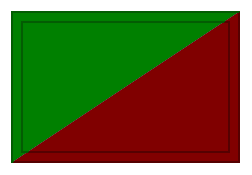
The Royal Regiment of Canadian Artillery is the artillery personnel branch of the Canadian Army.

The 4th Canadian Division is a formation of the Canadian Army. The division was first created as a formation of the Canadian Corps during the First World War. During the Second World War the division was reactivated as the 4th Canadian Infantry Division in 1941 and then converted to armour and redesignated as the 4th Canadian (Armoured) Division. Beginning in 1916 the division adopted a distinctive green-coloured formation patch as its insignia. In 2013 it was announced that Land Force Central Area would be redesignated 4th Canadian Division. It is currently responsible for Canadian Army operations in the Canadian province of Ontario and is headquartered at Denison Armoury in Toronto.

The 5th Canadian Division is a formation of the Canadian Army responsible for the command and mobilization of most army units in the provinces of New Brunswick, Nova Scotia, Prince Edward Island and Newfoundland and Labrador; as well as some units in Kingston, Ontario. The division is recognized by the distinctive maroon patch worn on the sleeve of its soldiers.
Canadian Forces Station Debert was a Canadian Forces station located in Debert, Nova Scotia. It was most recently used during the Cold War as a communications facility and was home to a "Regional Emergency Government Headquarters" (REGH) complex, more commonly known by their nickname "Diefenbunker."

The Royal New Brunswick Regiment (RNBR) is a reserve infantry regiment of the Canadian Army based in New Brunswick. The Royal New Brunswick Regiment is part of 37 Canadian Brigade Group, 5th Canadian Division. The RNBR holds 65 battle honours.

The 1st (Halifax-Dartmouth) Field Artillery Regiment, RCA, is a Canadian Forces reserve artillery regiment. It is located in Halifax, Nova Scotia, at 73 Hobson Lake Drive. The unit consists of two batteries, 51st and 84th Field Batteries. There are two units located within 1st (Halifax-Dartmouth) Field Artillery Regiment. One is in Halifax and the other is the 84th Independent Field Battery located in Yarmouth NS. Both share the same Commanding Officer.

The Canadian Scottish Regiment is a Primary Reserve infantry regiment of the Canadian Army based on Vancouver Island in British Columbia.

The 7th Canadian Infantry Division was an infantry division of the Canadian Army, mobilized in the spring of 1942 and assigned for home defence within Atlantic Command, during World War II.
The 6th Canadian Infantry Division was an infantry division of the Canadian Army, formed in 1942 during the Second World War. It was attached to Pacific Command. The division had a brigade sent to the Aleutian Islands Campaign, particularly at Kiska, but never saw action. The 6th Division was to have been part of a proposed Commonwealth Corps, formed for a planned invasion of Japan, but was disbanded in 1945, after the war was ended by the bombing of Hiroshima and Nagasaki.

The 2nd/10th Dragoons was a militia regiment of the Canadian Army, based in the Niagara, Wentworth, and Brant regions of southern Ontario. It was formed in 1936 by amalgamating the 2nd and 10th Dragoons, both of which had served previously as cavalry units in the Canadian militia. After World War II the regiment was converted into an anti-aircraft artillery unit. In 1962 the regiment was converted into a field howitzer unit and in 1968 amid a downsizing of the Canadian Armed Forces the regiment was reduced drastically before eventually being completely disbanded in the mid-1990s. The regiment is currently on the Supplementary Order of Battle.

The 8th Canadian Infantry Division was a military formation of the Canadian Army that served within Pacific Command in Western Canada during World War II. The Division units were raised on 18 March 1942 and the HQ was raised on 12 May 1942 at Prince George, BC. The Division was a home defence unit, initially consisting of the 19th, 20th, and 21st Canadian Infantry Brigades. In July the home Defence Divisions were reorganised and the 8th Division consisted of the 14th and 16th Infantry Brigades. The 19th Brigade went to the 6th Canadian Infantry Division, the 20th went to the 7th Canadian Infantry Division, and the 21st would remain at Valcartier, PQ as a strategic reserve. The 8th Canadian Infantry Division was disbanded on 15 October 1943, along with the 16th Brigade. The 14th Brigade returned to the 6th Division.

Pacific Command was a formation of the Canadian Army created during the Second World War to strengthen and administer home defence facilities on Canada's Pacific Coast against possible Japanese attack. A second major function was to train reinforcements to be sent to the Canadian divisions in Europe. Pacific Command combined the pre-war Military District No. 11 with Military District No. 13. The command headquarters was initially housed in Esquimalt Fortress near Victoria, but on 30 November 1942 it was moved to the Old Vancouver Hotel in downtown Vancouver.

The First Canadian Army was a field army and a formation of the Canadian Army in World War II in which most Canadian elements serving in Northwest Europe were assigned. It served on the Western Front from July 1944 until May 1945.
In September 1939, the British Army was in process of expanding their anti-aircraft and mobile assets. Among these new changes was the formation of Anti-Aircraft Command which was formed on 1 April 1939, and the 1st Armoured Division formed in 1937. The list below will include the British Army units, colonial units, and those units which were in the process of formation.

TheIrish Fusiliers of Canada was an infantry regiment of the Canadian Army. It was placed on the Supplementary Order of Battle in 1965. In 2002, it was taken off the Supplementary Order of Battle and Amalgamated with The British Columbia Regiment .

The 42nd Field Artillery Regiment, RCA is a Canadian Army Reserve artillery regiment based in Pembroke, Ontario. It is part of the 4th Canadian Division's 33 Canadian Brigade Group.
The following is a hierarchical outline for the Canadian Armed Forces at the end of the Cold War. It is intended to convey the connections and relationships between units and formations.
The New Brunswick Dragoons was a cavalry regiment of the Non-Permanent Active Militia of the Canadian Militia.
The Saint John Fusiliers was an infantry regiment of the Non-Permanent Active Militia of the Canadian Militia. In 1946, they were amalgamated with The New Brunswick Rangers to form the South New Brunswick Regiment which was later renamed as The New Brunswick Scottish. They now form part of the 1st Battalion, The Royal New Brunswick Regiment.












